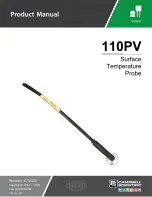
DE
EN
When putting the DFA into service for the first time, the function of the remote trip must be tested to
exclude the following fault possibilities:
»
The test residual operating current I
∆
is set too low (see “Preparation for Remote Trip Facility”, p. 14)
»
Wiring between RCCB and DFA is incorrect (see “Wiring for Remote Trip Facility”, p. 21)
»
The residual current circuit-breaker had not been switched on beforehand (the relay contact
“Connected” is not connected; no flash code will then be given)
»
The RCCB is defective and should be replaced
A suspected defect of the RCCB may also be checked by pressing the test button.
Note:
If a continuous signal is present at the signal inputs, e. g. because a button is sticking, then the
relevant function will be executed only once. All other functions may continue to be used.
3.3. Switching Outputs
The DFA is equipped with 3 relay outputs which signal the relevant status of the RCCB. It is possible to
switch smaller loads via these relay contacts or, in the case of bigger loads, with the aid of installation
relays. All relays have a common pole (at terminal 11).
Note:
If the DFA develops a fault, or if the operating voltage of the DFA fails, all 3 relay contacts will
close in order to alert to this situation.
► Remote trip facility N (Terminal 16)
If the remote trip function is required for a RCCB, then this terminal should be connected to the neutral
conductor N (input side of residual current circuit-breaker, see “Wiring”, p. 20).
► Remote trip facility Lx (Terminal 15)
With the optional remote trip function this terminal is connected with a phase Lx switched by the RCCB
(output side of residual current circuit-breaker, see “Wiring”, p. 20).
Note:
If the remote trip function is required, the test residual operating current I
∆
of the DFA has to be set to
the rated residual operating current I
∆
of the RCCB (see “Preparation for Remote Trip Facility”, p. 14).
► External status indicator (Terminal 1)
An external status LED may be connected at this terminal via a resistor to DC+. This LED also provides
the flash code (see “Flash Codes”, p. 19).
3.4. Bus Connection
If the DFA has been fitted retrospectively with the Dupline DFA-DI interface option for the Dupline instal
-
lation bus, the following terminals are used for connection to the bus:
► (Terminal 7)
Here the Dupline signal conductor () should be connected.
EN
DE
17








































